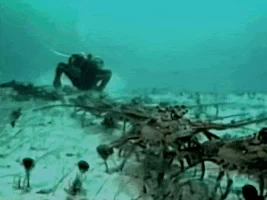New tool
enables Nova Scotia lobster fishery to address impacts of climate change
NOAA Northeast Fisheries Science
Center
 Researchers use long-term survey
data sets and climate models to help fishing communities plan for a warmer
ocean.
Researchers use long-term survey
data sets and climate models to help fishing communities plan for a warmer
ocean.
Researchers have developed a tool that incorporates projected changes in
ocean climate onto a geographic fishery management area.
Now fishermen,
resource managers, and policy-makers can use it to plan for the future
sustainability of the lobster fishery in Nova Scotia and Canadian waters of the
Gulf of Maine.
U.S. and Canadian researchers have
developed a tool that incorporates projected changes in ocean climate onto a
geographic fishery management area. Now fishermen, resource managers, and
policy-makers can use it to plan for the future sustainability of the lobster
fishery in Nova Scotia and Canadian waters of the Gulf of Maine.
"Climate change has socio-economic impacts on coastal communities and the seafood market, but integrating that information into planning and decision-making has been a challenge," said Vincent Saba, a fishery biologist at the Northeast Fisheries Science Center and a co-author of the study.
"Ocean warming is
leading to an accelerated redistribution of marine species. Knowing how animals
will shift distribution, and what to do about shifts across management borders
both regional and international, will be critical to planning on how to adapt
to those changes."
American lobster is Canada's most
valuable fishery, contributing 44 percent of the total commercial value of all
fisheries in Atlantic Canada in 2016. Lobster landings have been trending
upward in recent decades, and many small rural communities in Atlantic Canada
rely heavily on lobster for their economic well-being.
Changing climate could
have a significant impact on the fishery and on those communities.
Researchers from Fisheries and
Oceans Canada at the Bedford Institute of Oceanography in Halifax, Nova Scotia
and at NOAA's Northeast Fisheries Science Center collaborated on the study.
Their findings, published in Frontiers
in Marine Science, indicate that overall projected changes in offshore
lobster habitat for the region as a whole are positive, but that changes in
resource management need to be considered to promote the long-term
sustainability of the fishery in Nova Scotia.
Ocean temperatures have been warming
in the Gulf of Maine and along the Northeast Continental Shelf during the past
few decades, causing many species to shift their distribution to the northeast.
When ocean temperatures are above the preferred range for lobsters, it can
reduce their survival, growth, and reproduction. The potential effects of
marine heat waves, like that observed in the Gulf of Maine lobster population
in 2012, can also be significant on the Scotian Shelf, a region with a
relatively high proportion of species at the edge of their thermal range.
Coastal Infrastructure and Lobster
Vulnerability
Researchers generated two climate
change vulnerability indices, one for coastal communities and one for lobster
in Nova Scotia.
Two ocean models, a regional ocean model with high resolution in the Scotian Shelf and Gulf of Maine region and a global climate model, provided projections of ocean bottom temperatures over multiple decades.
Two ocean models, a regional ocean model with high resolution in the Scotian Shelf and Gulf of Maine region and a global climate model, provided projections of ocean bottom temperatures over multiple decades.
The coastal infrastructure
vulnerability index puts a numerical value on each lobster management area to
indicate relative vulnerability to the effects of climate change.
Factors included economic dependence on the fishery, community population size, diversity of the fishery revenue, status of harbor infrastructure, total replacement cost of each harbor, increased relative sea level and flooding, impacts of wind and wave climate, and sea ice.
Factors included economic dependence on the fishery, community population size, diversity of the fishery revenue, status of harbor infrastructure, total replacement cost of each harbor, increased relative sea level and flooding, impacts of wind and wave climate, and sea ice.
The vulnerability index also puts a
numerical value on the vulnerability of offshore lobster habitat to ocean
warming and changes in zooplankton, a primary prey, as well as anticipated
changes in fishery productivity across management borders.
Study authors suggest the new
assessment tool could prepare a region for changes in potential catch through
adjustments in licensing and quotas, or adapting to a decrease in productivity
by encouraging and assisting fishermen to diversify their targeted species,
where they fish, or to seek non-fisheries-related income. It could also support
planning for projected increases in catch through investing in upgrades to
coastal community infrastructure.
"Our analysis is a first step in
considering this information in local fishery management decisions and
longer-term economic development strategies,' said Saba, who is located at
NOAA's Geophysical Fluid Dynamics Laboratory at Princeton University.
"This tool anticipates change and could be incorporated into assessment
models and help fishermen and resource managers with long-term planning."
